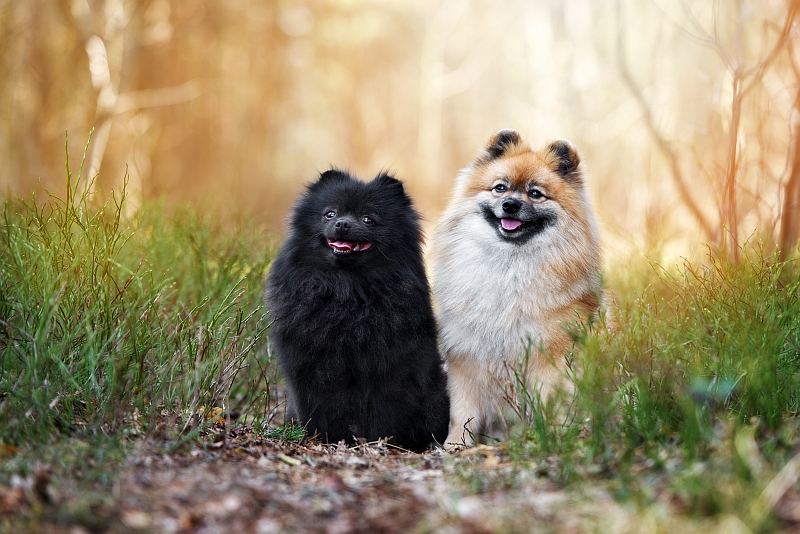It might not seem like a puffy Pomeranian would have any shared ancestry with an Alaskan Malamute. The size difference, personalities and overall appearance would hardly make these dogs seem like cousins, but surprisingly, they are! Find out which dogs are descended from the “spitz” dog breed, and what things these canines still have in common. Some easily recognizable traits of the spitz dogs is dense and thick fur, pointed ears, pointed muzzles, and thick tails that curl up over their backs. Here are a few dogs from the spitz family.

Akita: Once a hunting dog in Japan, the Akita nearly went extinct in the 1800’s. Now these dogs, which are some of the largest of the spitz family, have been thriving in American since the 1930’s.

American Eskimo Dog: Also known as “Eskies,” this small white-furred pup is descended from the German Spitz and the Keeshond. They would tour as circus performers in Europe and the United States, where the popularity of this breed expanded. However, it was not until 1985 that the American Eskimo dog would officially be recognized by the AKC.

Pomeranians: The toy-sized Pomeranians are considered the smallest of the spitz dogs. Though they originated in Pomerania (a region in what is now Germany and Poland), the pups first arrived in the 1800’s in England. At that stage, the dogs were much larger than the miniature breeds we know and love today. Pomeranians were used as sheep-herding dogs whose spunky personalities would incite them to nip at the heels of disobedient sheep, and whose loyalty and effervescence made them a beloved companion canine. Queen Victoria brought some of the little pups from Italy, and the breed continued to develop and grow in popularity over time, eventually being welcomed by the American Kennel Club in 1900.

Alaskan Malamute: These arctic dogs were initially companions for the Inuit people for centuries. Large in stature and dauntless in attitude, the Malamutes made perfect hunting companions for big game such as elk, polar bear and marine mammals. The dogs would transport the prey on their backs over treacherous terrain, making them an invaluable addition to any hunting party. Later they were used as pack animals, search-and-rescue dogs during WWII.

Keeshond: While there has been a disappointing lack of historic documentation about this specific breed, the Keeshond was likely prized as both a watchdog and live-in companion in Holland during the 18th-19th centuries. The small sized dogs also played a political role during an uprising in Holland, wherein the Keeshonds became emblematic of the rebellion. When the Keeshond-loving rebels failed, many people abandoned or got rid of their dog for fear of the negative association of the political mascot. In spite of this, a small group of breeders were able to keep the breed alive, causing the Keeshond to be recognized by the AKC in 1930. This dog is now considered the national breed of Holland.

Chow Chow: The Chow Chow is considered one of the oldest dog breeds, dating back some 2,000 years or more. Hailing from China, Mongolia and Manchuria, the Chow was not brought to England until the late 1700’s but once the dogs became popular with Queen Victoria, they received increased acclaim. However, the dogs were not seen in America until the turn of the century in 1903.
Other spitz breeds: Samoyeds, Canaan dogs, and Shiba Inus.

